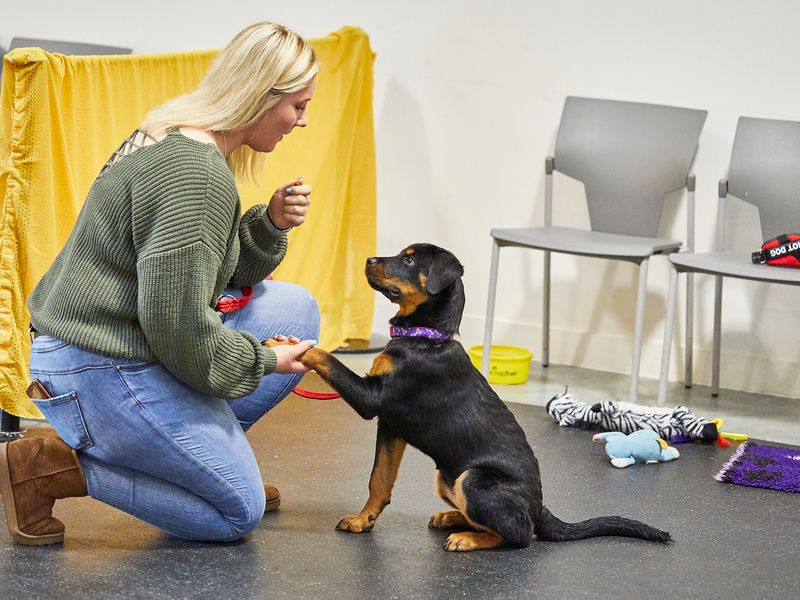News Blast
Stay updated with the latest happenings around the world.
Puppy Training: The Secret Language of Paws and Patience
Unlock the secrets of puppy training with paws and patience! Discover expert tips that will transform your pup into the perfect companion.
Understanding Your Puppy: Decoding Body Language and Behavior
Understanding your puppy's body language is essential for creating a strong bond and fostering a positive environment. Puppies communicate not just through barks but also through their posture, tail position, and facial expressions. For instance, a wagging tail typically indicates excitement or happiness, while a tucked tail may signal fear or submission. Observing your puppy's body language will help you interpret their feelings and react appropriately, which is vital when training and socializing them.
In addition to body language, understanding behaviors such as chewing, digging, or barking can provide valuable insights into your puppy's mental state. Puppies often chew as a natural way to explore their environment and relieve teething discomfort. To manage these behaviors, redirect their attention to appropriate toys or activities. By decoding these actions, you can better meet their needs and ensure they develop into a well-adjusted adult dog, creating a fulfilling companionship for both of you.

Common Puppy Training Mistakes: What to Avoid for Success
Training a puppy can be a rewarding experience, but there are several common puppy training mistakes that new pet owners often make. One of the most significant errors is inconsistency in commands and rules. For example, if you allow your puppy on the couch sometimes but not others, it confuses them. Consistency is key to helping your puppy understand what behaviors are expected. Another mistake is neglecting socialization. Puppies need to be exposed to various environments, sounds, and people to develop into well-adjusted adult dogs. Failing to socialize properly can lead to fearfulness and behavioral issues down the line.
Another common mistake is overloading on commands during training sessions. Puppies have short attention spans, so it’s essential to keep training sessions brief and focused. Aim for 5-10 minute sessions with plenty of positive reinforcement to keep them engaged. Additionally, many new owners underestimate the importance of patience. Training takes time and repetition, and getting frustrated can hinder your puppy's progress. Remember, every puppy learns at their own pace, so be sure to celebrate small victories along the way to encourage a positive learning experience.
How to Use Positive Reinforcement in Puppy Training
Positive reinforcement is a powerful training method that focuses on rewarding your puppy for desired behaviors rather than punishing them for undesirable actions. By using treats, praise, or playtime as rewards, you can effectively encourage your puppy to repeat good behaviors. To implement this technique, start by identifying specific behaviors you want to reinforce, such as sitting, staying, or walking politely on a leash. Whenever your puppy successfully performs the desired action, immediately offer a reward, ensuring the connection between the behavior and the reward is clear.
Consistency is key when using positive reinforcement. Make sure that everyone in your household is on the same page regarding the training cues and rewards. Additionally, ensure that your rewards are appealing to your puppy; you can experiment with different treats or toys to find what they respond to best. If your puppy shows signs of frustration or loses interest, take a break and try again later. Remember, patience and persistence are essential components of successful training, and your puppy will thrive in an environment where they feel encouraged and loved.